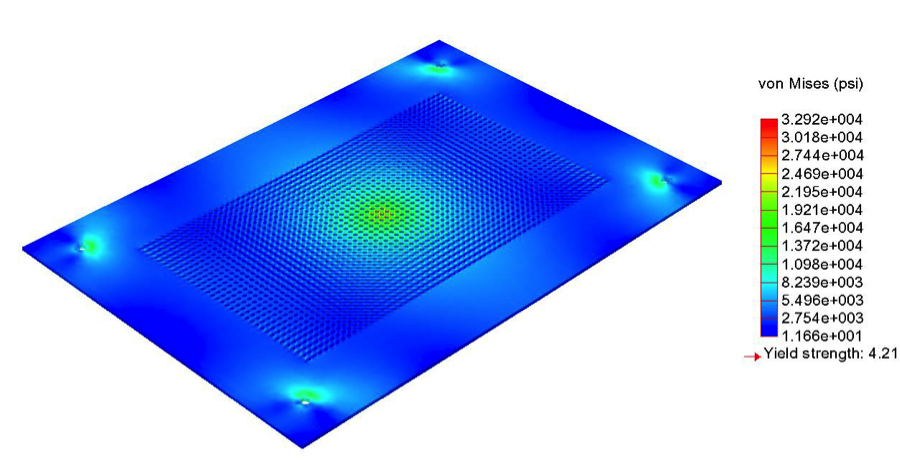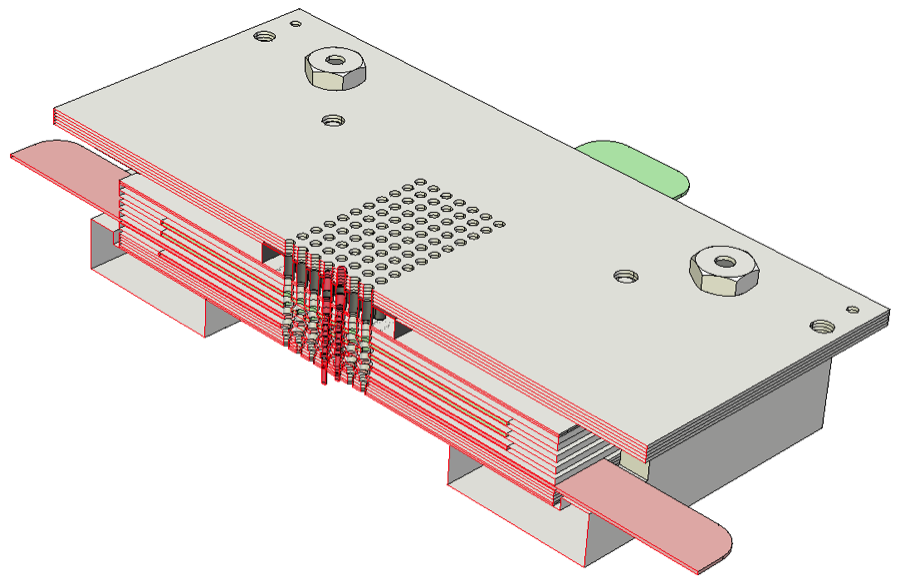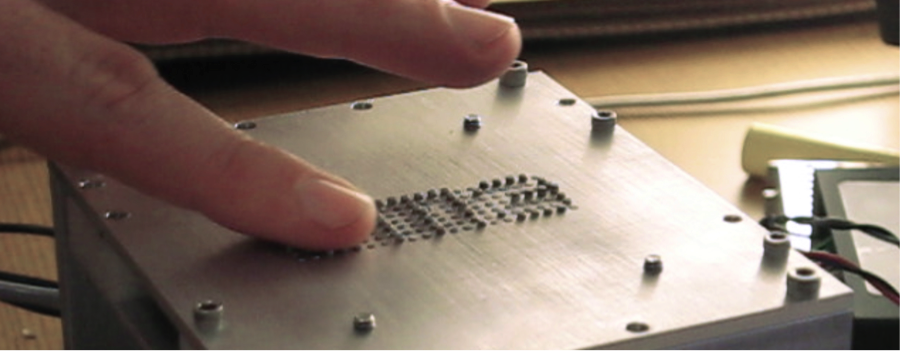-
Phase IV - NIH SBIR Grant Proposal and Preparation R&D
09/04/2017 at 04:36 • 0 commentsThe company has submitted a grant funding proposal that would complete the development of the tactile display. The proposed product would have a multi touch user interface and be able to present a full page of refreshable text and graphics.
The far, the R&D has been funded by $390,000 in grants from the National Institute of Standards and Technology (NIST).
The proposal includes usability testing, sensor testing and integration, fabrication of components, manufacturing studies, etc.
The proposal was submitted to the National Eye Institute, the National Institute on Child Health and Human Development, and the National Institute on Aging. We are also reaching out to foundations for funding to complete the development.
-
Phase III - Test Fixture Prototype Build and Refinement
09/04/2017 at 04:29 • 0 commentsBased on the design concepts from the Concept Development phase of the grant, a test fixture prototype was designed and fabricated. For cost efficiency, the text fixture had enough pins (147 pins in a 7x21 array) to demonstrate graphical and textual output while conserving development capital for additional materials testing and iteration of design. Performance and function were prioritized over screen size.
The text fixture was designed to assess performance of a range of potential components and over a range of demands. Prior to a technical design, systematic experiments were organized that could test hypotheses that were critical to answer prior to an expensive scaling of the design for full scale prototyping and testing.
Software to control the components was developed. The software allowed for components to be tested over a wide range of their performance capabilities and in various combinations.
A test fixture was built and tested. Material selection for components was found to be a critical factor in the success or failure of the system (based on the PFMEA. As such, a wider range of materials were tested. Mechanical systems failed and new component designs were created and also tested in the test fixture. Through testing, materials selection was narrowed to a set of materials and materials configurations that provide optimal functioning in a cost effective form. Mechanical systems were refined to a state of reliability and performance that matched the success criteria for the development stage.
The final test fixture was demonstrated to the blind singer Andrea Bocelli who requested the first unit from the assembly line.
Videos of the system functioning, or in person demonstrations are available with a CDA in place.
Images shown are:
1. Finite Element Analysis of possible material tested for use as a top touch plate under pressure.
2. CAD cut aways of the internal components of the tactile pins and holding plates.
3. A photograph from the demonstration video on the prototype.
4. One of the Swiss turned pins used in prototyping.
![]()
![]()
![]()
![]()
-
Phase II - Design Strategy and the CAD/CAM Concept Development
09/04/2017 at 04:11 • 0 commentsPhase II - Design Strategy and the CAD/CAM Concept Development
Assessment and Conceptual Design
Informed by the earlier work, the team set about exploring technologies, components and designs that could meet the early specifications for the end product, defined through the DIR, PFMEA and the IP review. Ideation proceeded through raw hand sketches, brainstorming and debates, through CAD sketches and CAD failure analyses. Illustrated is one concept (of several) that failed CAD materials and use analysis.
![]()
Mathematical analyses and engineering constraint analyses were also performed to identify the repercussions of a failure of one pin on other pins. Three concepts were rough prototyped – two with SLA, one in steel. These prototypes were manual powered configurations of parts to review form and function. One concept was chosen as superior based on how it compared to the information in the DIR and PFMEA. Sketch and debate concepts that may meet the needs of the end user. This design concept was explored further in design ideation in CAD.
-
Phase I – Preparations for Design
09/04/2017 at 04:07 • 0 commentsOur initial efforts were to organize our team’s Design Inputs Requirement (DIR) documentation. This includes developing an Understanding of the needs of end users through interviews and literature reviews. It also includes initial performance specifications for the tactile display. This document is useful for the team as we can then reference it against the technical capabilities of design concepts and prototypes.
This document includes requirements for pin density, pin holding force, refresh rates, energy use, error rates per 500,000 pin presentations, maintenance requirements, likely use environmental accident scenarios, environmental durability requirements, pin head shapes, temperature requirements, Unit weight and dimension constraints, cost to manufacture, device to device interfaces, in use service life, software requirements, user interface requirements, and graphical output capacity analyses.
A Process Failure Mode and Effects Analysis process was performed. A PFMEA is one of several methods that can be used in evaluating processes as part of Risk Assessment. PFMEA is a tool used to systematically identify process characteristics that constitute risk to patient safety, product acceptance or product profitability. The objective of a PFMEA is to identify potential failure modes and establish a priority for allocating eff orts or resources to reduce the risk associated with those failures. A PFMEA may be used in conjunction with a Design Failure Mode and Effects Analysis (DFMEA).
REFERENCES
EN ISO 14971:2000; Medical Devices – Application of Risk Management to Medical Devices.
IEC 812; Analysis Technique for Reliability – Procedure for Failure Mode Effects Analysis
In parallel with development of the DIR the team invested resources to understand existing intellectual property universe around the device – both to inform us of what has been explored and to identify licensable innovation that can accelerate the development process. Fifty-four relevant patents were identified, reviewed and analyzed. Through this process we identified IP at several companies and institutions that were of interest, entered negotiations with two entities, and licensing two patents that offered value and that could not be engineered around.




